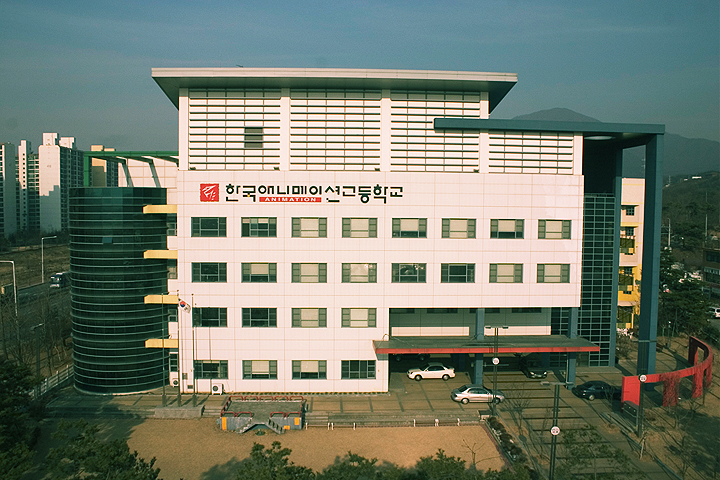Ishika Gupta, New Delhi
South Korea is the most educated country in the world with a high literacy rate. South Korea is also one of the top-performing OECD countries in reading literacy, mathematics and sciences with the average student scoring about 519, compared with the OECD average of 493, placing it ninth in the world. Korean people have schools from 7 am to 4 pm. After that, they either self-study or go to a private institution. According to the National Youth Policy Institute, Korean youngsters aged between 15 and 24 devote 49 to 43 hours for study every week, which means they devote 7 hours and 50 minutes everyday.

According to the Korean Ministry of Education, South Korea has a single-track 6-3-3-4 system (six years of primary school, three years of middle school, three years of high school and then 4 years of higher education). This maintains a single line of school levels to ensure that every citizen can receive primary, secondary, and tertiary education without discrimination. South Korea follows the Basic Education Act i.e. the Primary and Secondary Education Act and the Higher Education Act as per which the following types of schools are established: Kindergartens, Primary Schools, Civic Schools, Middle Schools, Civic High Schools, High Schools, Trade High Schools, Special Schools, Universities, Industrial Universities, Teachers Colleges, Junior Colleges, Air & Correspondence Universities, Technical Colleges, Miscellaneous Schools.
Primary Education
Primary education or elementary education is intended for students aged 6-12 years (Grade 1-6) between the ages of 5 and 7 in the Primary school, children study from the primary curriculum issued by the government which consists of moral education, Korean language, Social Studies, Mathematics, Science, Physical Education, Music, Fine Arts, and Practical Arts. From grade 3 onwards, English has been offered as a subject.
Middle school
Upon completion of primary school, students advance to middle school, this stage in the educational system is included as compulsory education. It is extended for 3 years (Grades 7-9) and is planned for students aged 12-13 years to 15-16 years. The curriculum has the same subjects as in Grades 3-6, but with different subject matter for the practical course in Grades 8 and 9.
High school
High school education is the final year in school. It lasts for 3 years (Grades 10-12). This level of education is not compulsory. It is for students aged 15 years to 18-19 years. High schools are divided into academic and vocational schools. Grade 10 consists of the subjects from the National Basic Curriculum, as for Grade 11 students can choose between three subjects: humanities, sciences or vocational training. To get admission to high school, students need to pass the entrance exam. It varies according to the subjects. The admission policy is very competitive. Students for vocational high schools may indicate their preferred school, whereas children who wish to attend a general high school are assigned a school in their area. Admission to a vocational high school may be granted through an entrance examination and/or the pupil’s list of marks from middle school. Science high schools are primarily made for particularly talented students in the natural sciences.

As in Science High schools, there are special high schools only for the most talented students in any particular field (music, art, sport, dance, foreign languages) are admitted, partly based on the recommendation of the middle school principal or teacher.
Higher Education
Admission to higher education requires successful completion of the higher education entrance examination, known as the College Scholastic Aptitude Test (CSAT). This test was introduced in 2004; it falls under the responsibility of KICE and takes place every year in November. It includes five subjects: Korean Language, Mathematics, Foreign language (English), Social Studies/Science/Vocational Training (students choose one of these three subjects) and a Second Foreign Language/Chinese characters and Classics.
In addition to the CSAT scores, higher education institutions can also take prep courses, portfolios, extra-curricular activities, letters of recommendation, etc. into consideration when determining admissions. At several universities, the CSAT scores represent 50% of the total score, while the other 50% consists of high school results (40%) and extracurricular activities (10%).
What do you think about the Korean Education System? Tell us in the comments!

the system is very tough but that’s why that is developed country. nicely written.
This is so informative!♥️ i was always curious about the korean grade system watching school kdramas.
Wow they really work hard. This article was insightful. Thanks for writing it 😊
This is so insightful! Very informative article
Education is important, it helps make our society a better place. It was interesting to read this article, got to know many insightful things about Korean Education System!
Very informative article ❣️
This is interesting
Korean education system is so different than Indian education system. Korean students spend so much time on study.. So impressive!
This is such an insightful article. Some informations were unknown to me , thanks to article I know about the education system there.
Got to know so much about Korean Education System through this article.
This is actually very informative 👏
Interesting and plz write also a comparison of Indian vs Korean education system